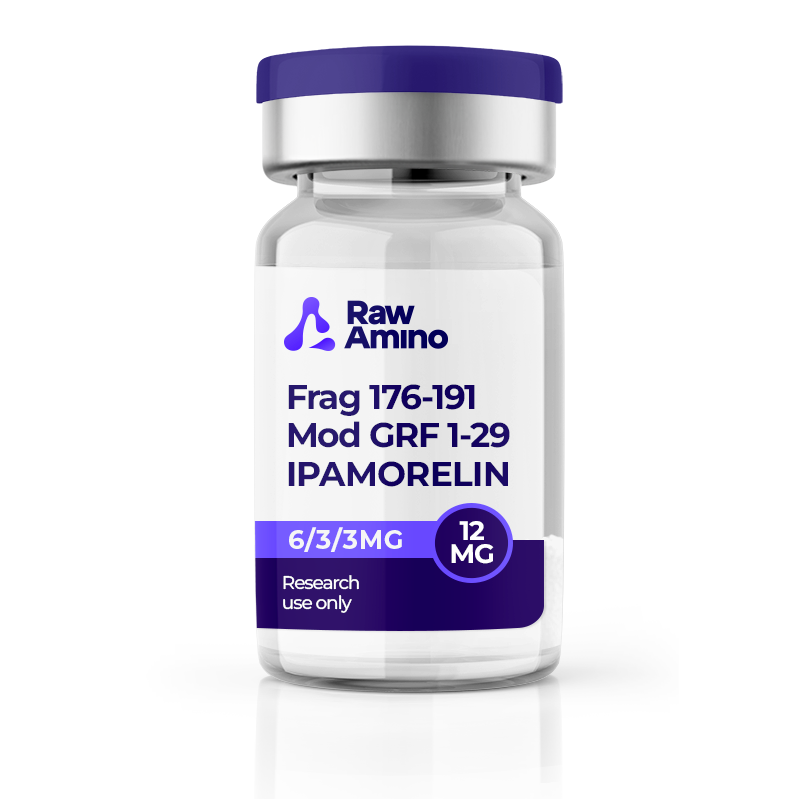
Fragment 176-191 & Mod GRF 1-29 & Ipamorelin – 12MG
$92.00
Discount per Quantity
| Quantity | Discount | Price |
|---|---|---|
| 5 - 8 | 5% | $87.40 |
| 9 + | 10% | $82.80 |
Scientific Overview of Fragment 176-191 & Mod GRF 1-29 & Ipamorelin
Fragment 176-191 & Mod GRF 1-29 & Ipamorelin are frequently studied together in laboratory settings for their possible roles in growth hormone–related pathways. Fragment 176-191, also referred to as hGH Fragment 176-191, Frag 176-191, AOD-9604, or tyr-hGH 177-191, is a shortened sequence derived from the growth hormone protein. Mod GRF 1-29 is often categorized as a growth hormone–releasing hormone (GHRH) analog, while Ipamorelin is commonly recognized as a growth hormone secretagogue receptor (GHSR) agonist.
Fragment 176-191 & Mod GRF 1-29 & Ipamorelin Studies and Research Data
Investigations into Body Composition
Fragment 176-191 has been examined in relation to fat metabolism, with findings suggesting interactions with adrenergic pathways that may influence lipid breakdown and thermogenic responses in animal models. Research observations indicate its influence could be more prominent in obese specimens compared to lean ones. Meanwhile, Ipamorelin and Mod GRF 1-29 have been studied for their potential association with muscle-related processes, including pathways connected to hypertrophy, hyperplasia, and nitrogen balance.
Insights into Growth Hormone Signaling
Mod GRF 1-29 has been researched for possible influences on growth hormone release and insulin-like growth factor-1 (IGF-1) activity. Ipamorelin has been observed to interact with ghrelin receptors, which may contribute to altered growth hormone pulsatility. Experimental setups combining both peptides suggest potential amplification of natural fluctuations in growth hormone activity.
Findings on Bone and Joint Pathways
Fragment 176-191 has been studied with hyaluronic acid in models of osteoarthritis, where it appeared to be linked with cartilage integrity. Ipamorelin and Mod GRF 1-29 have separately been investigated in relation to bone development, with Ipamorelin showing possible associations with increased bone mineral content in rodent models.
Fragment 176-191 & Mod GRF 1-29 & Ipamorelin Research on Cellular Pathways of Aging
The trio of Fragment 176-191 & Mod GRF 1-29 & Ipamorelin has been explored in the context of cellular aging processes. Studies suggest they may influence telomere dynamics, oxidative stress markers, and turnover pathways, with research pointing to potential roles in maintaining signaling balance during aging.
Conclusion
Research into Fragment 176-191 & Mod GRF 1-29 & Ipamorelin highlights potential connections across growth hormone regulation, fat metabolism, musculoskeletal pathways, and cellular studies of aging. Current findings remain preliminary and exploratory, requiring further research for clarification.
References
- Heffernan M, Summers RJ, Thorburn A, Ogru E, Gianello R, Jiang WJ, Ng FM. The effects of human GH and its lipolytic fragment (AOD9604) on lipid metabolism following chronic treatment in obese mice and beta(3)-AR knock-out mice. Endocrinology. 2001 Dec;142(12):5182-9.
- Waters MJ, Brooks AJ. Growth hormone and cell growth. Endocr Dev. 2012;23:86-95.
- Kwon DR, Park GY. Effect of Intra-articular Injection of AOD9604 with or without Hyaluronic Acid in Rabbit Osteoarthritis Model. Ann Clin Lab Sci. 2015 Summer;45(4):426-32.
- Gobburu JVS, Agersø H, Jusko WJ. Pharmacokinetic-Pharmacodynamic Modeling of Ipamorelin in Human Volunteers. Pharm Res. 1999;16:1412–1416.
- Ferrer-Lorente R, Cabot C, Fernández-López JA, Alemany M. Combined effects of oleoyl-estrone and a beta3-adrenergic agonist on lipid stores of diet-induced overweight male Wistar rats. Life Sci. 2005 Sep;77(16):2051-8.
- Cox HD, Smeal SJ, Hughes CM, Cox JE, Eichner D. Detection and in vitro metabolism of AOD9604. Drug Test Anal. 2015 Jan;7(1):31-8.
- Svensson J, Lall S, Dickson SL, Bengtsson BA, Rømer J, Ahnfelt-Rønne I, Ohlsson C, & Jansson JO. The GH secretagogues ipamorelin and GH-releasing peptide-6 increase bone mineral content in adult female rats. J Endocrinol. 2000;165(3):569–577.
- Sinha DK, Balasubramanian A, Tatem AJ, Rivera-Mirabal J, Yu J, Kovac J, Pastuszak AW, Lipshultz LI. Beyond the androgen receptor: the role of growth hormone secretagogues in the modern management of body composition in hypogonadal males. Transl Androl Urol. 2020 Mar;9(Suppl 2):S149-S159.
- Aagaard NK, Grøfte T, Greisen J, Malmlöf K, Johansen PB, Grønbaek H, Ørskov H, Tygstrup N, & Vilstrup H. Growth hormone and growth hormone secretagogue effects on nitrogen balance and urea synthesis in steroid treated rats. Growth Horm IGF Res. 2009.
Disclaimer:
The products mentioned are intended solely for laboratory research and in-vitro experimentation. They are not approved for human or animal use of any kind. All details provided are for educational purposes only. By purchasing from this site, you agree to comply with our Terms and Conditions.
Only logged in customers may leave a review.
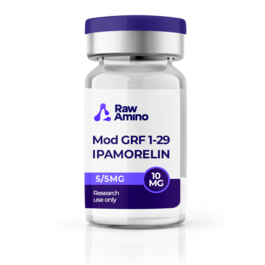
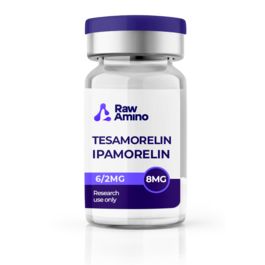
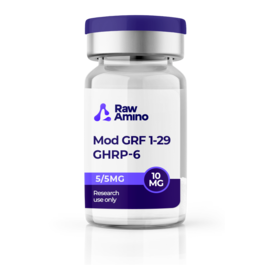

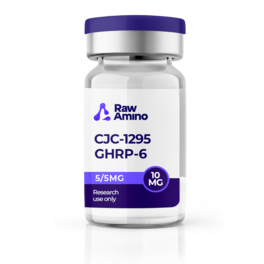
Reviews
There are no reviews yet.